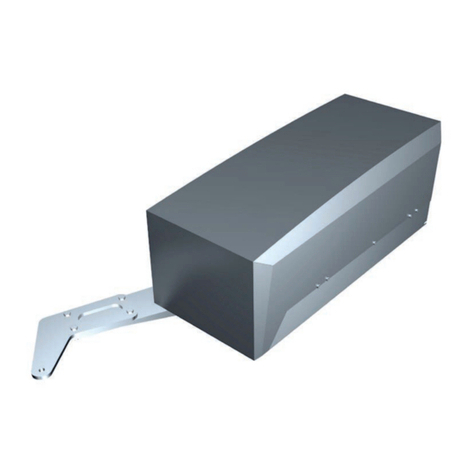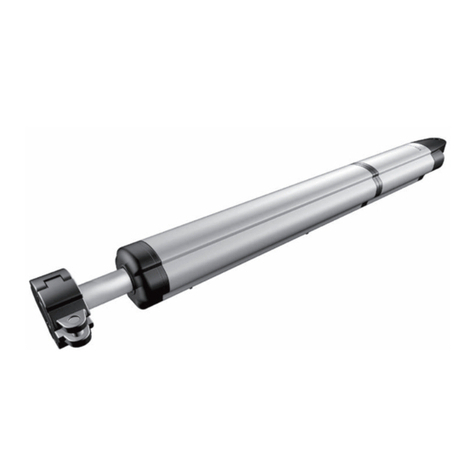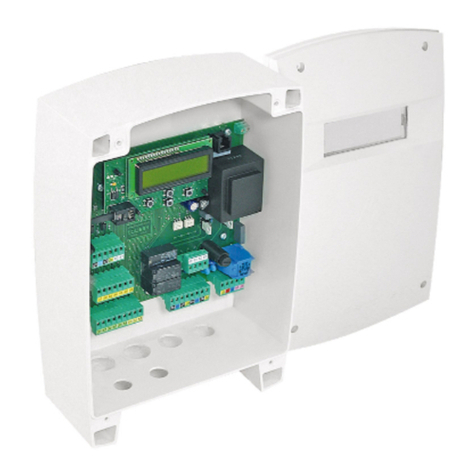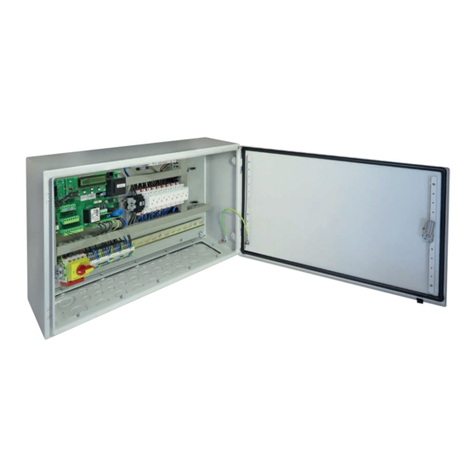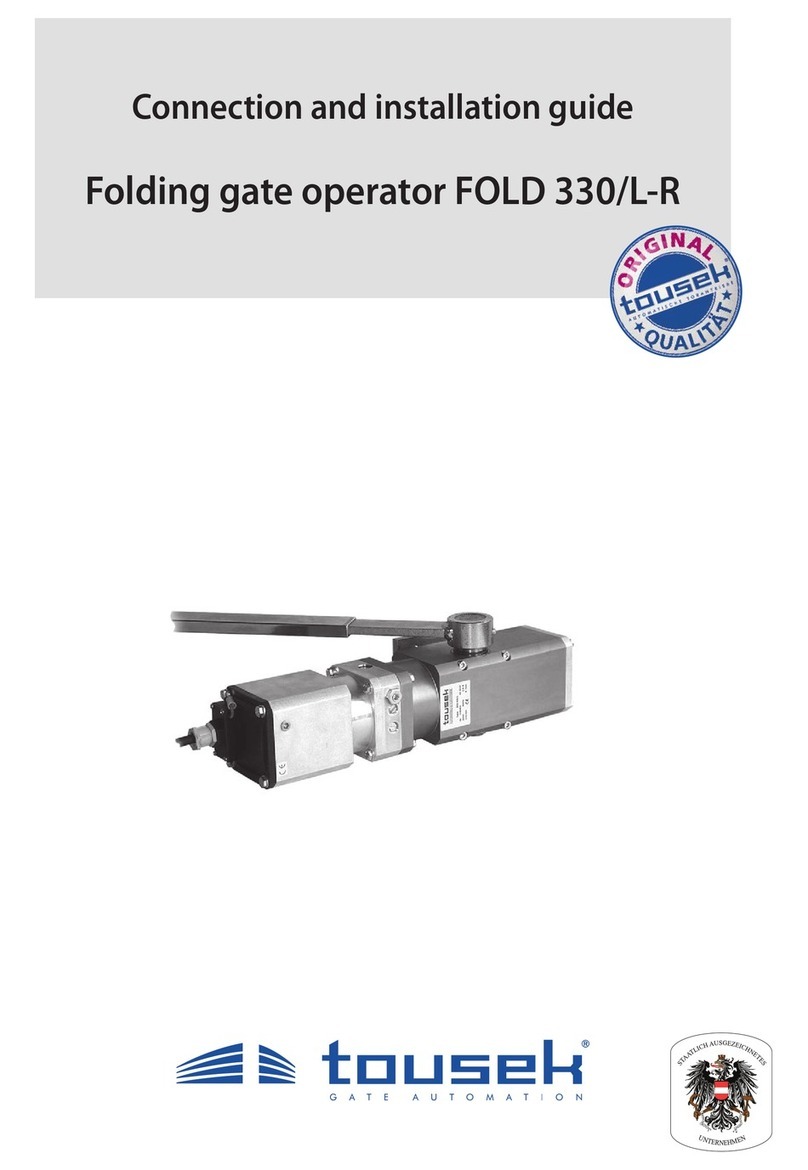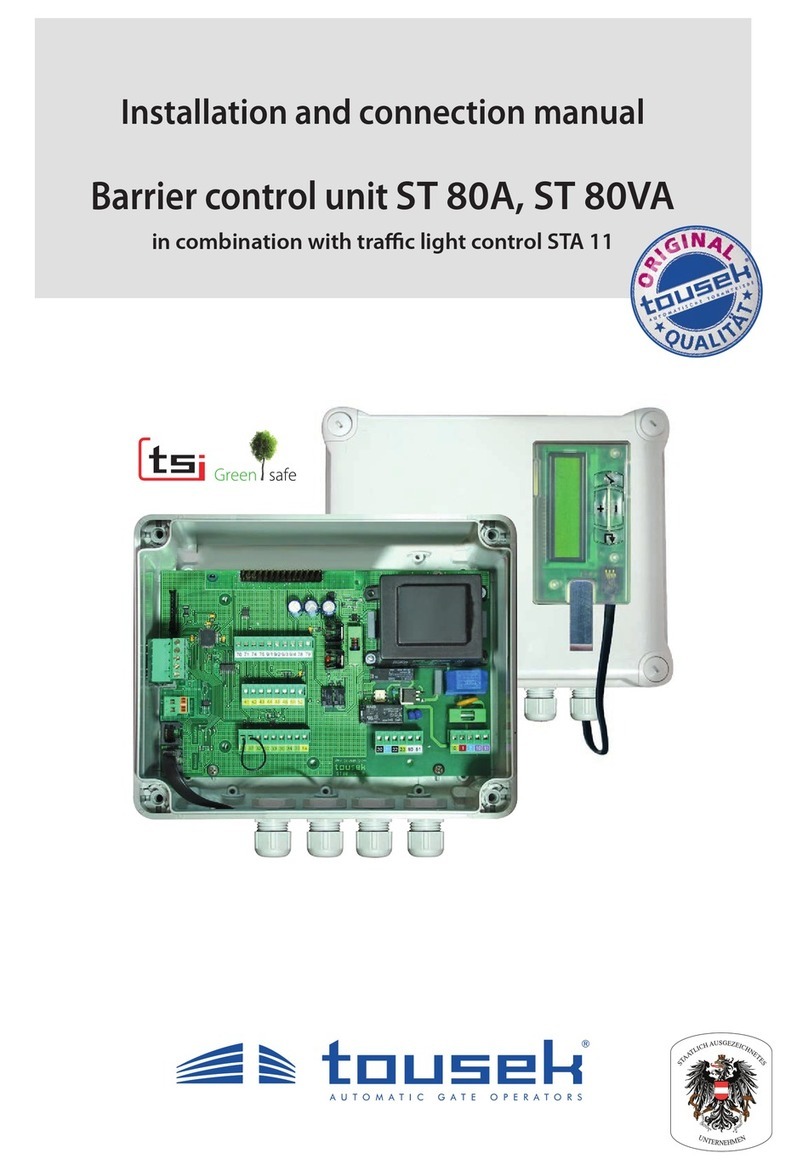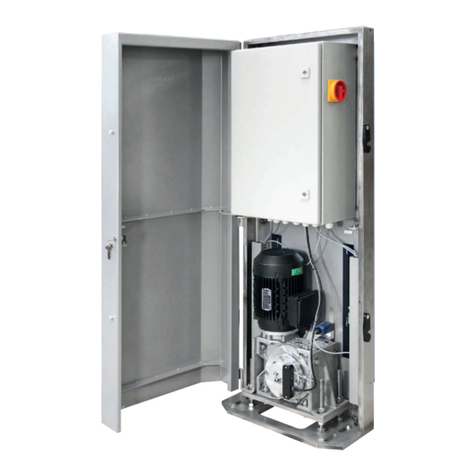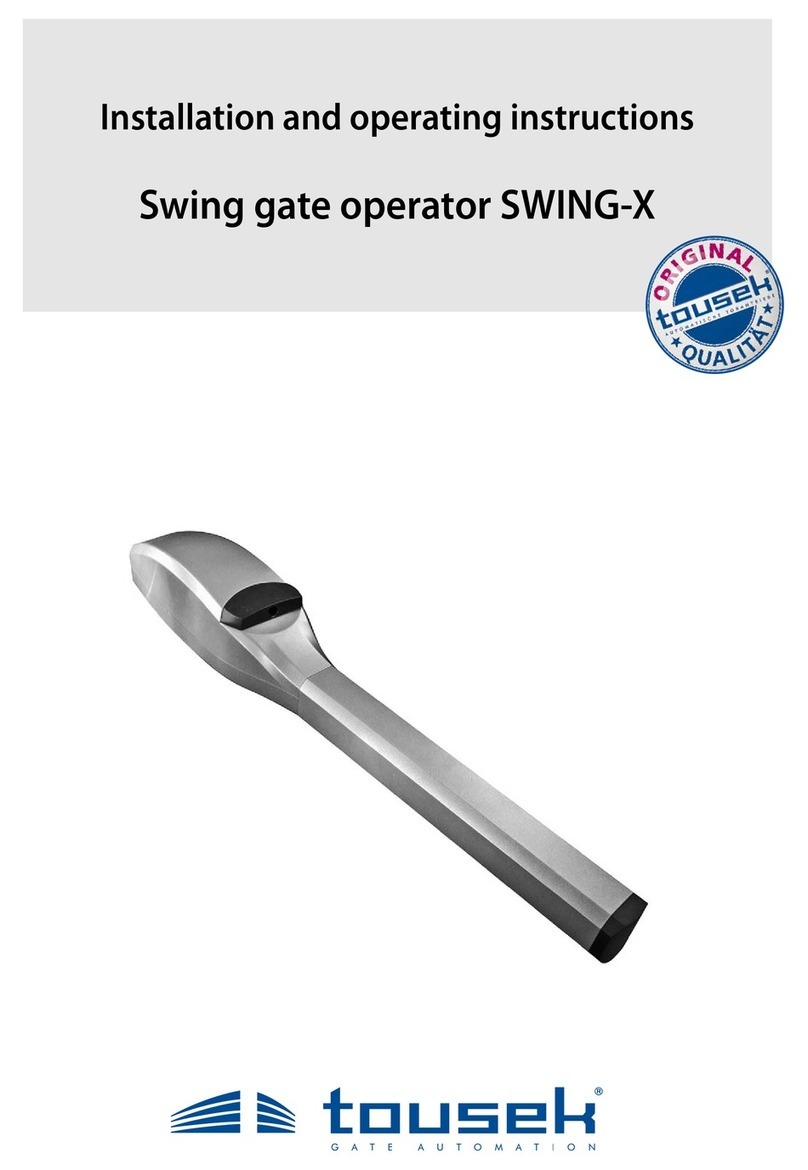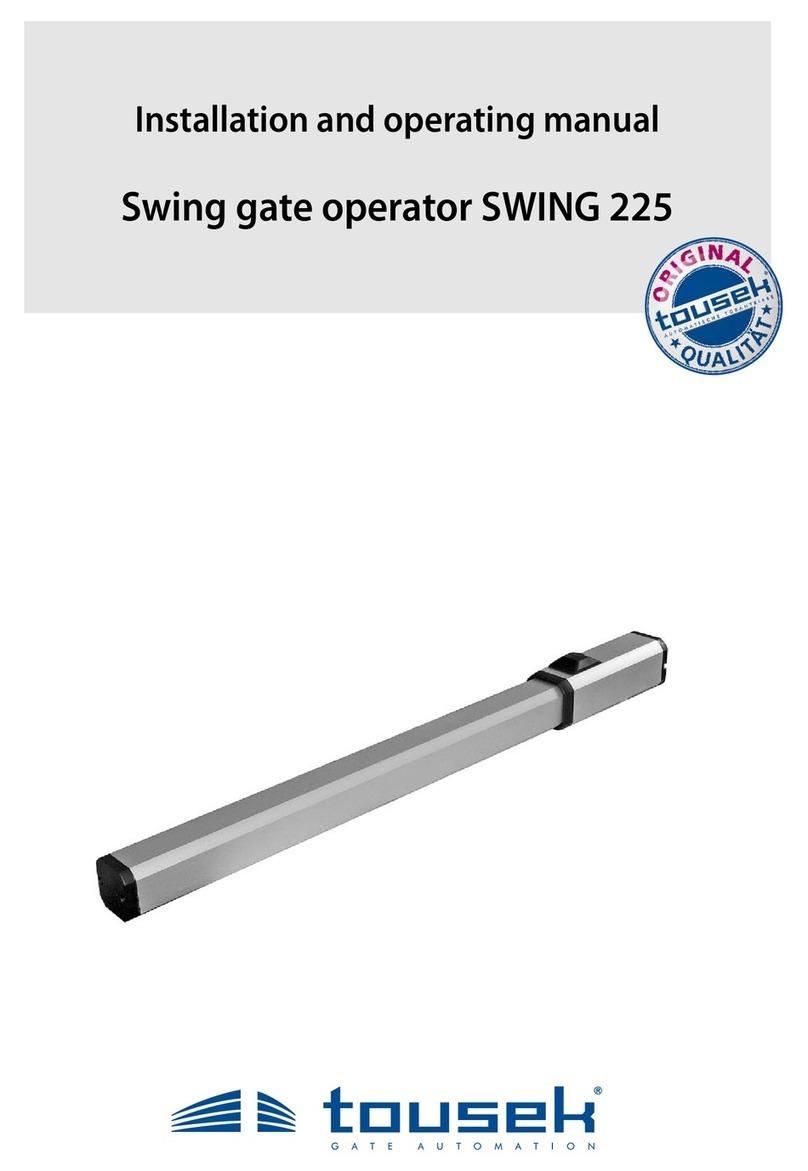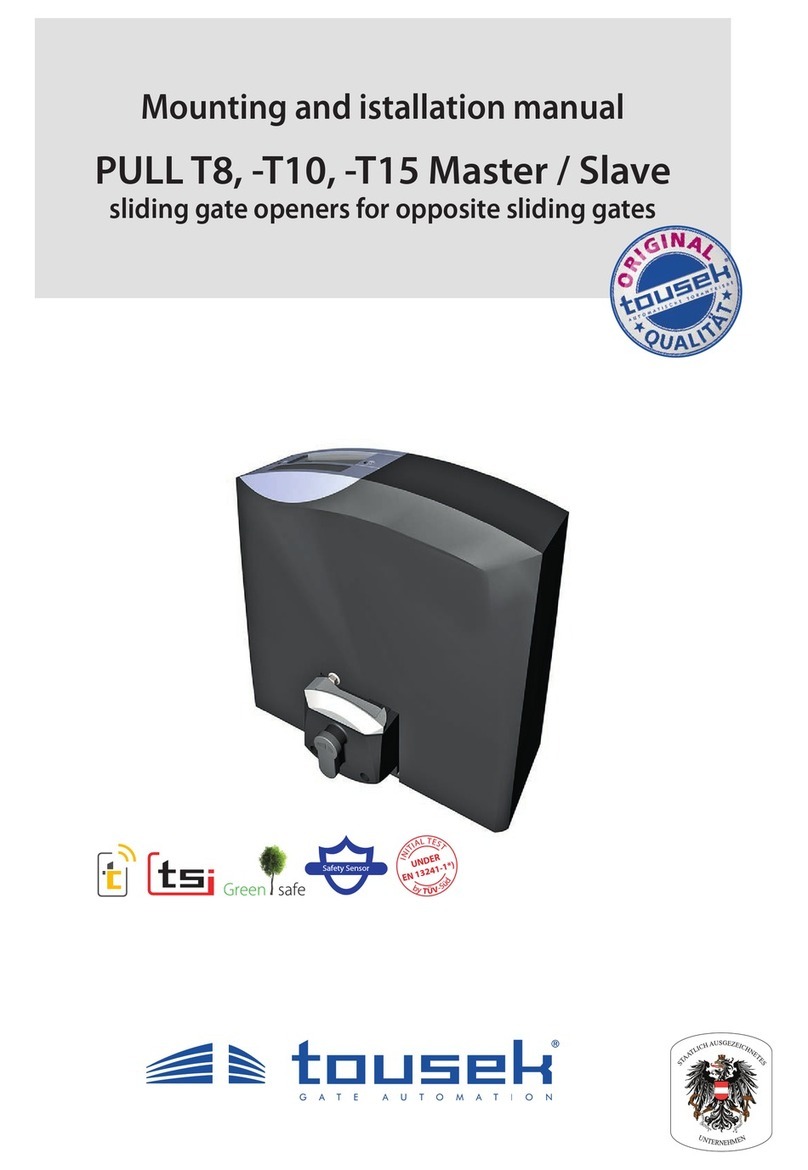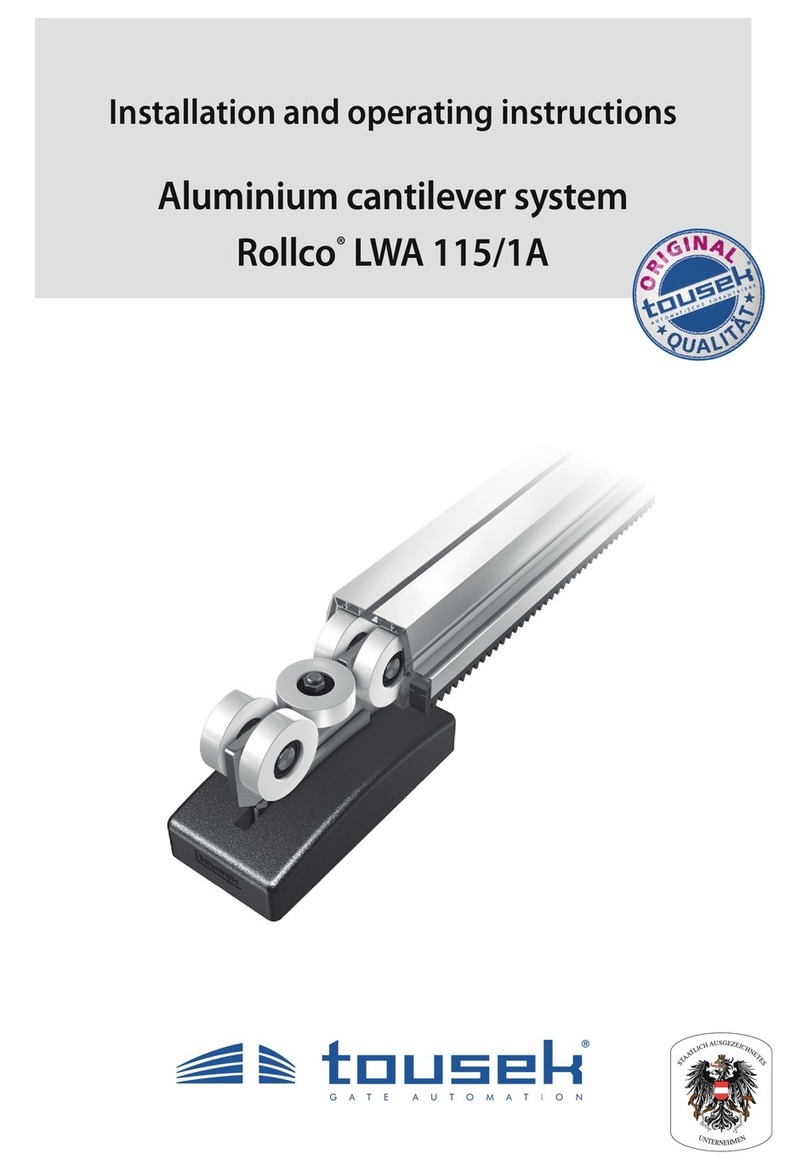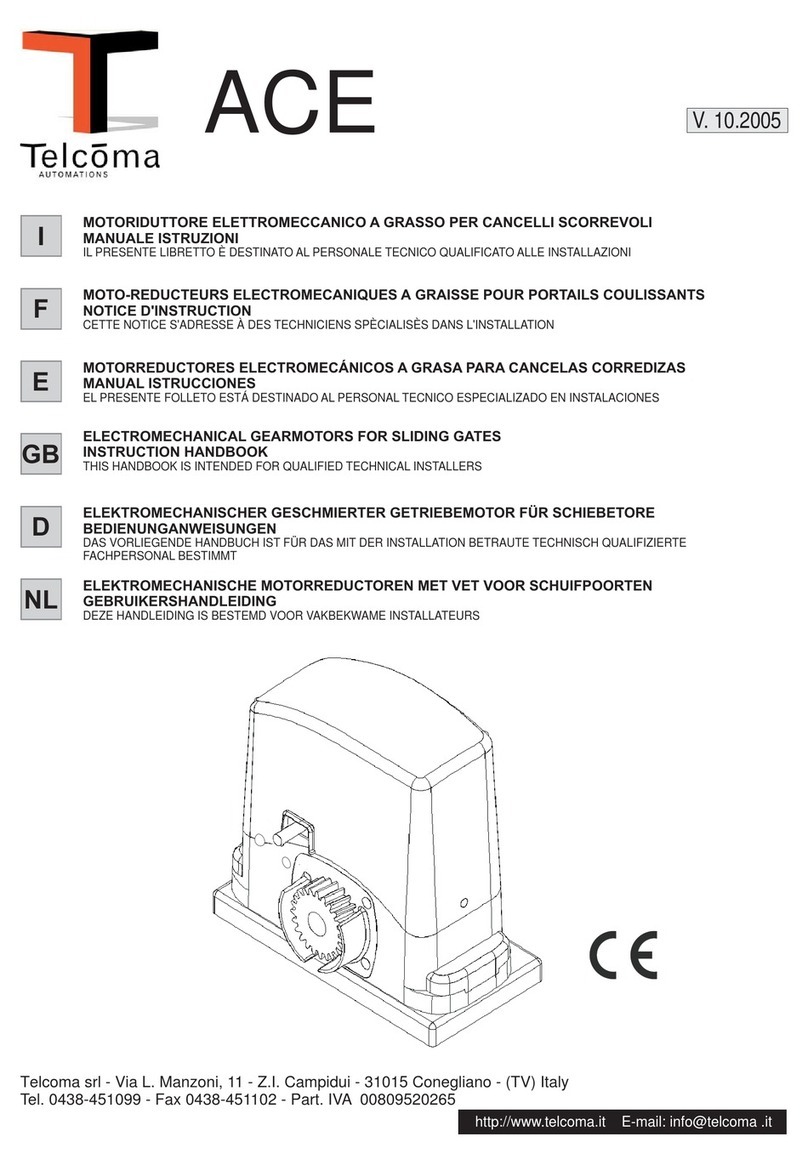
- 2 - tousek / E_TPS-20_03 / 30. 08. 2016
Index
General warning and safety details.............................................................................................................. 3
1. Notes, general characteristics, function, technical data TPS 20 (N, PRO) ............................................... 4
2. Mounting ........................................................................................................................................................ 5
Technical layout TPS 20, TPS 20N, TPS 20 PRO.................................................................................. 5–7
2.1 Mounting of the motor................................................................................................................................. 8
Mounting dimensions TPS 20, TPS 20N, TPS 20 PRO ...................................................................... 8–10
2.2 Mounting of the gear rack......................................................................................................................... 11
2.3 Dismantling............................................................................................................................................... 11
3. Control unit, overview TPS 20, TPS 20N ................................................................................................... 12
Warnings - connection works ..................................................................................................................... 13
3.1 Clamp/terminal assignment TPS 20, TPS 20N ....................................................................................... 13
3.2 Control box TPS 20 PRO ............................................................................................................................ 14
Warnings - connection works ..................................................................................................................... 14
3.3 Clamp/terminal assignment TPS 20 PRO ............................................................................................... 15
3.4 Adjustments - overview, Programming keys, program menu, basic settings .......................................... 16
Structure of the menu............................................................................................................................... 17
3.5 Connections and adjustments ................................................................................................................... 18
Buttons/switches
........................................................................................................................................... 18
Impulse button (terminals 30/32)............................................................................................................. 18
Pedestrian function (terminals 30/34)...................................................................................................... 18
Pedestrian button (terminals 30/34) ........................................................................................................ 19
CLOSE switch (terminals 30/33) ............................................................................................................. 19
STOP switch (terminals 30/31)................................................................................................................ 19
Emergeny mode ....................................................................................................................................... 19
Safety ...................................................................................................................................................... 20
GPhotocell (Contact: terminals 45/46) ........................................................................................................ 20
PHC-back area (Contact: terminals 45/48)............................................................................................... 20
PHC-function ............................................................................................................................................ 20
PHC-pause time ....................................................................................................................................... 20
PHC-selftest ............................................................................................................................................. 20
Photocells - connection examples ........................................................................................................... 20
Safety edges ................................................................................................................................................. 22
GMain clos. edge (terminals 50/51) .......................................................................................................... 23
GSide edge 1 OPEN (terminals 50/52) ..................................................................................................... 23
Side edge 2 CLOSE (terminals 50/55) .................................................................................................... 23
Side edge 3 OPEN (terminals 50/56) ...................................................................................................... 23
SE-status display...................................................................................................................................... 23
Motor ...................................................................................................................................................... 24
Max. force, Increased starting force, ARS response time,
Speed, Soft way, Soft speed, End position OPEN, End position CLOSE ................................................ 24
Operating mode............................................................................................................................................ 24
Impulse mode........................................................................................................................................... 24
GOpening direction ..................................................................................................................................... 24
GOperating mode........................................................................................................................................ 24
Partial opening.......................................................................................................................................... 25
Automatic mode ...................................................................................................................................... 25
Pause time logic ..................................................................................................................................... 25
Additional module..................................................................................................................................... 25
Trafclight ................................................................................................................................................ 25
Description of add. modules courtyard lamp/control lamp hence gate status display.............................. 26
Lights / lamps ............................................................................................................................................... 27
Prewarning OPEN (signal lamp: terminals 10/11) ................................................................................... 27
Prewarning CLOSE (signal lamp: terminals 10/11) ................................................................................. 27
Greenphase,Leavetime,Trafclightgateclosed,Trafclightlogic....................................................... 27
Courtyard lamp......................................................................................................................................... 27
Control lamp ............................................................................................................................................. 27
Diagnosis ...................................................................................................................................................... 28
Status display, Delete end positions, Factory setting, ............................................................................. 28
Software version, Serial number, Protocoll, Status Sensor ...................................................................... 28
3.6 Other connections of TPS 20 PRO ............................................................................................................ 29
4. Sockets of TPS 20 PRO (for optional radio receiver and induction loop detector) .................................... 29
5. Connection of radio receiver ...................................................................................................................... 30
6. Initial operation ............................................................................................................................................ 31
7. Emergency release in case of power failure (note for the user) ............................................................. 33
8. OptionaltrafclightcontrolunitSTA11.............................................................................................. 34–39
9. Error diagnosis............................................................................................................................................. 40
10. Cable plan .................................................................................................................................................... 41
11. Dimensioned drawings TPS 20, TPS 20N, TPS 20 PRO...................................................................... 42–44
This manual is the sole property of the TOUSEK Ges.m.b.H. and may not be made available to competitors. All rights reserved. No part of it may be reproduced without our prior
written permission. We will not accept liability for any claims resulting from misprints or errors. This edition of the manual replaces all earlier publications of the same.
